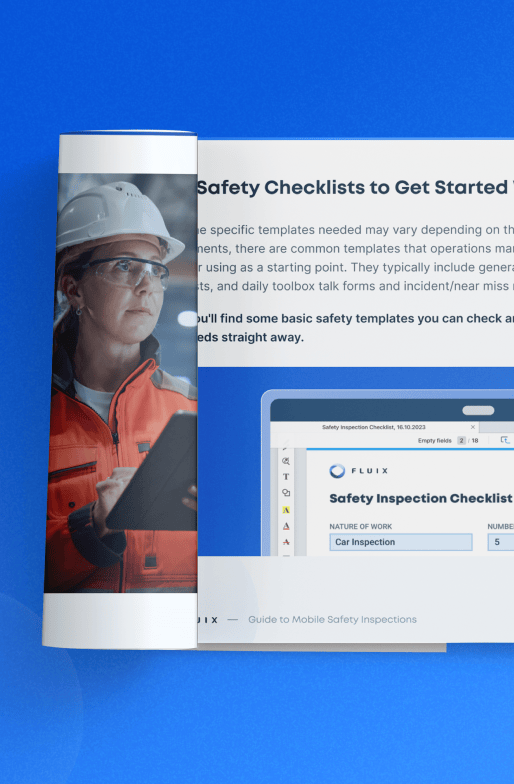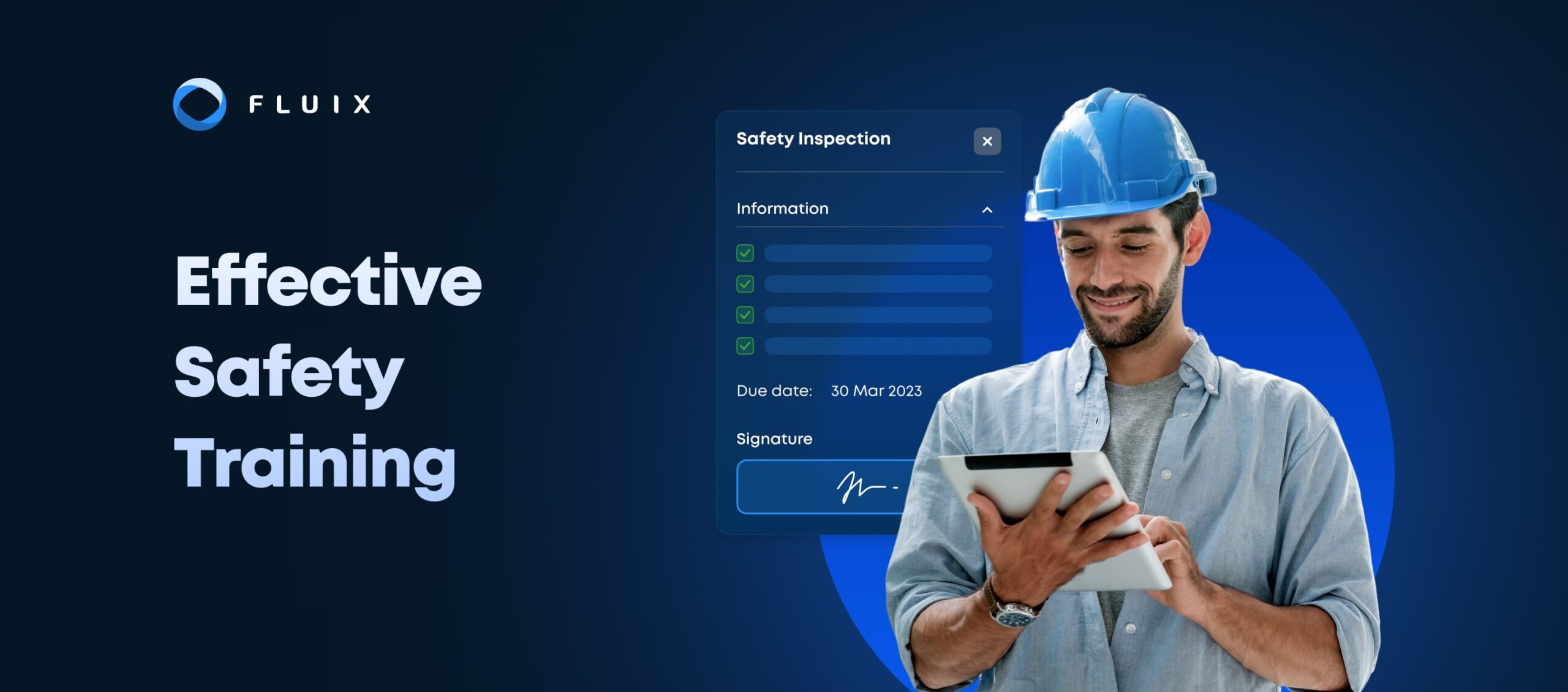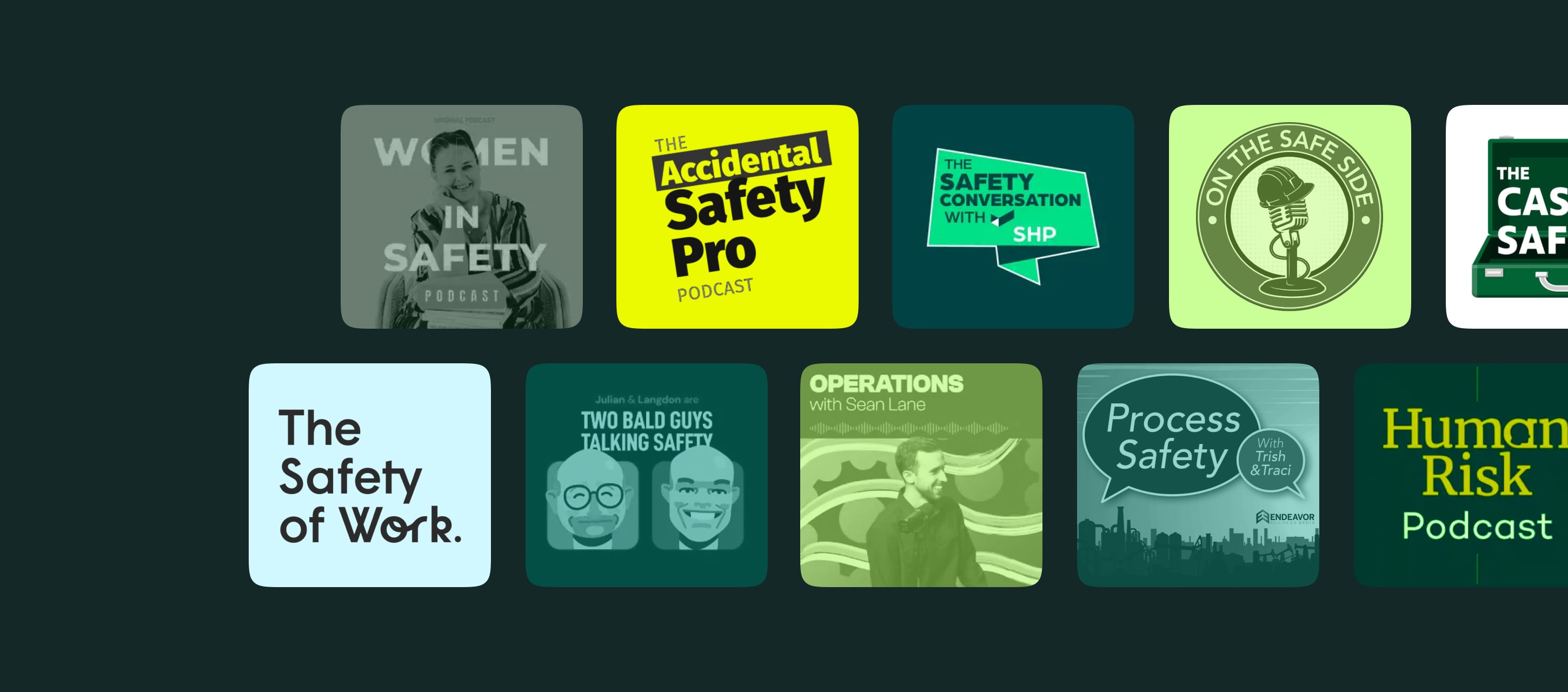Safety training in the workplace shields the people who drive your company’s operations each day. It also shields your business from legal legal liabilities and financial risks associated with accidents and non-compliance.
In this guide, you’ll find everything you need to establish or update a strong safety training program for your business. As well as get an idea of how dedicated health and safety training software can give a hand with this.
Contents:
What Is Workplace Safety Training?
Workplace safety training refers to the process of providing employees with the knowledge and skills needed to perform their jobs safely.
The goal is to ensure that workers are aware of potential hazards in their work environment and understand how to mitigate these risks.
Safety training encompasses a broad range of safety protocols, from emergency preparedness to the proper use of equipment and adherence to health standards.
Why Is Safety Training Important?
The significance of safety training in the workplace transcends mere compliance with laws and regulations. It is fundamentally about protecting workers and creating a safety-first culture. These are some of the key benefits of prioritizing safety as a business owner or leader.
Preventing Workplace Injuries and Illnesses
Educated employees can recognize hazards and take preventive measures. Data reported by Occupational Health and Safety (OHS) indicates that implementing 20 hours of employee safety training each year can increase adherence to defined protocols by 68%.
Reducing Costs
Environmental Health and Safety today estimates that for every $1 of direct costs businesses lose to accidents, they also lose $2 to indirect costs. Examples of direct costs include:
- Regulatory fines from the Occupational Health and Safety Administration and other agencies
- Expenses related to employee health and workers’ compensation claims
- Wage benefits paid to injured or ill employees
Indirect costs include loss of business reputation, increased insurance claims and damaged employee morale.
Enhancing Employee Morale
A safe workplace promotes employee well-being, leading to higher job satisfaction and retention. In the OHS survey cited above, using site-specific images and videos in education materials doubled the likelihood that employees would be “very engaged” in the training process and resulting safety updates.
In addition, research published in the journal Safety Science found that safety education improves both morale and the work environment, with more pronounced effects in high-risk industries than in low-risk industries.
Read more: Read more: Safety management software features
Types of Workplace Health and Safety Training
You can borrow from many diverse categories of safety training to tailor education programs to the needs of your teams. These are some of the most common types of safe workplace training:
General Safety and Health Training
This type of training covers basic safety and health principles applicable across various industries, such as first aid.
Everyone on the job site should know how to recognize and report a hazard and understand that they have the right to do so without retaliation. You should also cover how leadership will communicate with employees about the safety pyramid and workplace hazards.
Emergency Response Training
Emergency training gives employees the skills to respond to emergencies such as fires, natural disasters or medical crises.
This category of safety training in the workplace also includes violent incidents in the workplace and emergency evacuation procedures.
Hazard-Specific Training
This training category focuses on specific hazards that may be present in the workplace, such as chemicals, electricity, or machinery. Fall prevention, ladder safety and environmental safety also fall into this category. Workplaces such as restaurants require training on safe food handling and preparation.
Occupational Health Training
This category addresses issues related to occupational health, including ergonomics, safe lifting techniques, stress management and workplace wellness. It also covers employee health resources the company offers as a benefit to its workers.
Personal Protective Equipment (PPE) Training
This type of safety training in the workplace teaches employees about the correct use, maintenance, and limitations of PPE.
Safety Leadership Training
Aimed at managers and supervisors, this training emphasizes the role of leadership in fostering a safety culture.
What Are the Components of Workplace Safety Training?
While every workplace has specific safety training needs, most businesses should plan at minimum to cover these general topics.
Relevant Hazards
You should provide a detailed understanding of the specific risks your employees face and why these risks occur. Examples may include heat illness, fatigue, dehydration, and exposure to toxic gas or chemicals.
Prevention Strategies
This category covers the company’s safety training checklists and protocols to prevent injury and illness. If your work requires PPE or other protective equipment, provide comprehensive instructions about how to use this type of gear effectively.
Reporting System
Safety training in the workplace must also teach employees how to officially document and report workplace dangers. Provide transparent information about how the company records near misses and incidents as well as the steps you take to mitigate reported hazards.
Having a dedicated software like Fluix can help. With its help, you can streamline the reporting process by enabling employees to easily write incident reports, near misses, and hazards directly from their mobile devices. And automated approvals and reporting ensure that safety concerns are efficiently captured and addressed.
The Ultimate Guide
to Safety Inspections
Essential tools, customizable templates, and expert tactics to help you improve your inspection process


How Can Workplaces Implement Effective Safety Training?
Creating and executing a successful safety training program requires research, planning and implementation, as well as post-session steps such as tracking and running toolbox talks.
We suggest you follow these steps to keep your teams on track with their necessary safety knowledge.
Step 1: Conduct a Needs Assessment
Begin by conducting a thorough workplace hazard assessment to identify potential sources of injury or illness. While lack of training may be the cause of some incidents, others result from issues with morale, motivation, equipment, environment or procedures. You should also develop a general safety training orientation class for all new employees.
Determine the specific training needs of your workforce based on their roles and the identified hazards. For example, your safety education program, or, alternatively, a safety talk workflow, could address gaps in skills or job-related knowledge. It could also focus on changing unsafe employee behavior or introducing new procedures.
Depending on your industry, you may need to train your employees on certain topics under local, state or federal laws. For example, the Occupational Safety and Health Administration (OSHA) regulates some types of businesses.
During the preparation phase for safety training in the workplace, you may also want to discuss difficulties you’ve had with past training programs or challenges that could arise to prepare for these possible issues.
In survey data reported by Occupational Health and Safety (OHS), more than 59% of respondents said finding the time is the main difficulty they face with safety training. More than 31% cited verification as their biggest challenge and almost 24% said they struggle to schedule refresher and remediation sessions.
Step 2: Develop Learning Objectives
Define clear, measurable learning objectives for each training session. These objectives should align with the overall goals of your safety program and address specific knowledge gaps or skills deficiencies.
According to OSHA, effective workplace safety education should result in employees who can:
- Identify hazards and potential issues at the job site
- Evaluate possible causes of health and safety issues
- Take steps to reduce or remove hazards from the workplace
- Teach and engage their colleagues in safety protocols
In addition to these general objectives, specific objectives will vary by industry.
Step 3: Plan Training Materials
Decide on the most effective training formats for your objectives and audience. You can incorporate visual elements, videos and other forms of media. Options to consider include games, open discussion topics, on-the-job training, self-guided instruction, role-play, simulation and case studies.
OSHA recommends aiming for no more than one-third lecture content for safety training in the workplace. In other words, two-thirds of the materials should be taught through hands-on methods for optimal engagement.
High-quality educational resources are available from reputable providers, so you don’t have to reinvent the wheel if you don’t have the bandwidth to create content from scratch.
Ensure that any materials you use are up-to-date and comply with current safety standards and regulations. Relate the content as closely as possible to the workers’ on-the-job tasks to help with connection and retention.
Step 4: Deliver the Training
Conduct interactive, training sessions that provide time for open questions and discussions. You may want to work with experienced educators or facilitators who can effectively communicate the safety material and engage the audience. Peer-to-peer education is another engaging method, especially when it comes to hands-on safety training.
Step 5: Evaluate the Training
Assess the effectiveness of your training program through tests, surveys, safety observations and feedback. You should also gather feedback from both team members and supervisors. Aim to measure both the immediate impact (learning) and the long-term outcomes (behavior change and reduction in accidents).
If your evaluations don’t reveal short-term and long-term efficacy, it’s time to revisit your content and delivery methods. Ensure that your teaching directly addresses the hazards in your workplace that most often cause incidents. If the content aligns with your objectives, consider refreshing your teaching strategies and incorporating new ways of learning.
Step 6: Refresh and Refine
Even when the data shows that your training sessions worked, you should revisit your safety education program periodically. Regular updates help keep content relevant, relatable and supportive of your overall business objectives.
As part of your evaluation, keep detailed records of all training sessions, including dates, content, instructors and attendee lists. These documents track safety education for OSHA compliance purposes and guide you in planning future refresher courses.
It’s easier to do all the above when you have one source of truth for all of your safety documents and certificates records.
For example, one of our customers, world leading renewable energy providers Siemens Gamesa has implemented Fluix as an internal safety training management software, and reduced training time at the same time enabling easy overview of the progress of each technician’s upskilling.
Quoting Christian Munck Jørgensen, Training Specialist at SG: “Thanks to our digital logbooks, we make sure that our technicians have all the needed competencies and that they have been approved by everyone involved in the process.”
Find more Find more tactics in Siemens Gamesa’s success story
Best Practices for Safety Training
To maximize the effectiveness of your workplace safety training program, consider the following best practices:
Make It Understandable
OSHA emphasizes the importance of presenting training that everyone on your job site can understand. When developing training materials, consider disability, literacy, culture and language. You may need to translate your documents into different languages.
Even if everyone on your team reads English, you should use simple, clear language. Illustrate concepts by using pictures, charts and other graphics.
Cater to Adult Learners
Incorporate the principles of adult learning in your lesson plans. Generally, adults prefer self-guided materials that directly connect with their experiences. They want interaction, so plan breakout groups, small discussions, question-and-answer sessions and teach-back style training to mix it up and drive engagement.
While computer-based training can supplement your programs, it shouldn’t be the primary approach since it’s not the most effective way to reach this audience.
Consider the Learning Environment
The training space should be arranged to encourage active participation. For example, place seating in small groups or a circle rather than in a classroom-style arrangement.
Make sure the room has a comfortable climate and limit distractions like outside noise. When bringing together a large group who may not all know each other well, consider introductions and quick ice-breaker activities.
Offer Continuous Education Opportunities
Safety training should not be a one-time event but an ongoing process. Emphasize a culture of safety at your company with regular informal discussions.
These toolbox talks give the entire team a chance to connect on relevant safety issues, share observations, ask questions and receive reminders about important protocols.
You can also schedule strolls around the job site as a group for productive walk-and-talk sessions.
Use Data to Streamline Safety Training in the Workplace
Responsible business owners and managers must prioritize safety training in the workplace. In addition to the primary goal of preventing illnesses and injuries, an effective safety training program creates a productive, healthy work environment.
And Fluix can deliver you a data-driven approach to workplace safety education. Mobile accessibility for training materials, assessments, real-time tracking for task completion, and compliance reports will help you manage your training programs more effectively and will less stress for both you and your teams.







